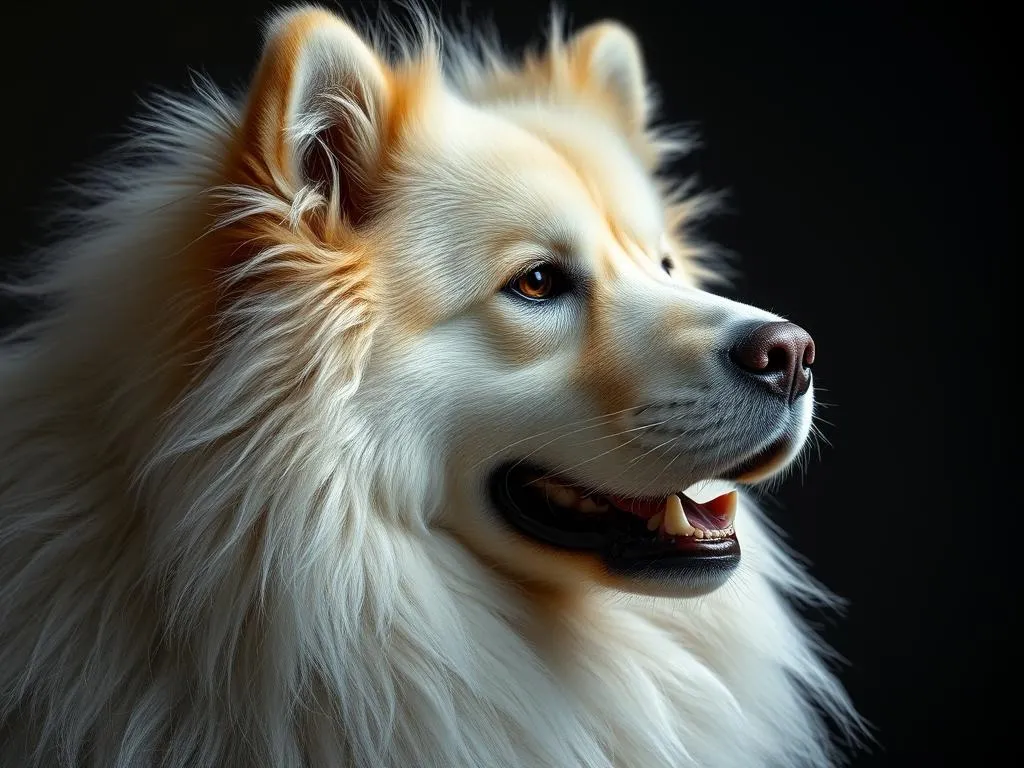
Understanding dog breeds is essential for prospective dog owners and enthusiasts alike. Each breed possesses unique characteristics, behaviors, and care requirements that can significantly impact their compatibility with different lifestyles. Among these breeds, the Samoyed stands out for its friendly demeanor and striking appearance.
Understanding Dog Breeds
What Defines a Dog Breed?
A dog breed is a specific lineage within the domestic dog species, characterized by distinct traits such as size, coat type, color patterns, temperament, and behavior. These traits are often shaped by selective breeding practices aimed at enhancing specific qualities, whether for work, companionship, or show.
The importance of breed characteristics cannot be overstated. Each breed has been developed to fulfill specific roles—like herding, guarding, or companionship—resulting in varying needs and behaviors. Understanding these traits is crucial for anyone considering adding a dog to their family.
The Role of Genetics in Dog Breeds
Genetics plays a fundamental role in defining dog breeds. Genetic traits can influence a dog’s physical appearance, health, and behavior. For instance, certain breeds may be predisposed to specific health issues, such as hip dysplasia or heart conditions. Additionally, genetics can affect temperament; for example, some breeds are known for their high energy levels and need for regular exercise, while others may be more laid-back.
Overview of Popular Dog Breeds
Working Breeds
Working breeds, such as the Siberian Husky and Rottweiler, are known for their strength and intelligence. These dogs were originally bred to perform tasks like pulling sleds or guarding property. They are typically energetic, loyal, and require regular exercise to stay healthy and content.
Companion Breeds
Companion breeds, like the Poodle and Cavalier King Charles Spaniel, are designed to be affectionate companions. They thrive on human interaction and are often well-suited to family life. These breeds are generally smaller in size and can adapt well to various living situations, including apartments.
Herding Breeds
Herding breeds, including the Border Collie and Australian Shepherd, are smart and energetic dogs bred for herding livestock. They require ample mental and physical stimulation to prevent boredom and undesirable behaviors. Their intelligence makes them highly trainable, but they also need firm leadership.
The Samoyed Breed
History and Origin
The Samoyed has a rich history, originating from Siberia, where it was bred by the Samoyedic people for herding reindeer and pulling sleds. This breed has been a loyal companion for nomadic tribes for centuries, aiding in their survival in harsh Arctic conditions. Today, the Samoyed remains popular for its friendly demeanor and striking appearance, often seen in urban settings and as family pets.
Physical Characteristics
Samoyeds are medium to large-sized dogs, typically weighing between 35 to 65 pounds. They are known for their thick, double-layer coat, which is predominantly white, although shades of cream and biscuit are also common. One of their most charming features is their “Sammy smile,” a natural expression that enhances their friendly appearance. Their eyes are almond-shaped and typically dark, giving them a warm and inviting look.
Temperament and Behavior
The temperament of the Samoyed is one of its standout traits. They are known for being friendly, gentle, and adaptable, making them excellent family pets. They are highly social dogs and usually get along well with children and other pets. However, their strong prey drive may lead to chasing smaller animals if not properly trained.
Health Considerations
While Samoyeds are generally healthy dogs, they are prone to certain health issues, including hip dysplasia, progressive retinal atrophy, and skin problems. Their average lifespan is around 12 to 14 years. Regular veterinary check-ups, a balanced diet, and preventive care can help maintain their health.
Caring for a Samoyed
Nutrition
Providing a Samoyed with a well-balanced diet is essential for their overall health and well-being. High-quality dog food that meets their nutritional needs, particularly for active dogs, is recommended. It’s crucial to monitor their weight, as Samoyeds can be prone to obesity. Consult with a veterinarian to determine the best feeding schedule and portion sizes.
Grooming
The grooming needs of a Samoyed are considerable due to their thick, double coat. Regular brushing, at least two to three times a week, is necessary to prevent matting and to manage shedding, which can be substantial during seasonal changes. Bathing should be done sparingly to maintain the natural oils in their coat, typically every few months or as needed.
Exercise Requirements
Samoyeds are energetic dogs that require regular exercise to stay healthy and happy. Daily walks, playtime, and mentally stimulating activities are essential for their physical and mental well-being. Engaging in activities such as fetch, agility training, or even hiking can help keep a Samoyed active and content.
Training a Samoyed
Basic Commands
Training a Samoyed should begin early to establish good behavior and obedience. Basic commands like sit, stay, come, and heel are essential for their safety and for fostering a strong bond between the dog and owner. Positive reinforcement methods, such as treats and praise, are effective in training Samoyeds due to their eagerness to please.
Socialization
Socialization is crucial for Samoyeds to ensure they grow into well-rounded adults. Introducing them to various environments, people, and other animals from a young age will help them become confident and well-adjusted. Puppy classes and playdates can provide valuable social experiences.
Addressing Behavioral Issues
Despite their friendly nature, Samoyeds can develop behavioral issues, especially if they are bored or not adequately exercised. Common issues include excessive barking, digging, or stubbornness. Consistent training, mental stimulation, and ensuring they have plenty of physical activity can help mitigate these problems.
Living with a Samoyed
Ideal Living Conditions
Samoyeds thrive in environments where they have ample space to roam and play. They adapt well to both rural and suburban living but may struggle in small apartments unless they receive sufficient exercise. Ideally, they should have access to a safe, fenced yard where they can play and explore.
Integration with Family Life
Samoyeds are known for their affectionate nature, making them a great addition to family life. They enjoy being involved in family activities and are often eager participants in games and outings. Their friendly disposition allows them to bond with children and other pets, promoting a harmonious household.
Travel and Adventures
Traveling with a Samoyed can be a rewarding experience. Their friendly nature makes them great companions on road trips, hikes, or camping adventures. When traveling, it’s important to ensure they are safely secured in a vehicle and have access to water and breaks during long trips. Exploring dog-friendly parks and trails can also be enjoyable for both the dog and its owner.
Conclusion
In summary, the Samoyed is an incredible breed known for its friendly temperament, striking appearance, and adaptability. Understanding their unique characteristics and care requirements is vital for potential owners. Whether you’re looking for a loyal companion, an active family pet, or a dog to share adventures with, the Samoyed may be the perfect choice. Their joyful spirit and affectionate nature can bring immense joy to any household, making them a breed worth considering for those looking to welcome a dog into their lives.









